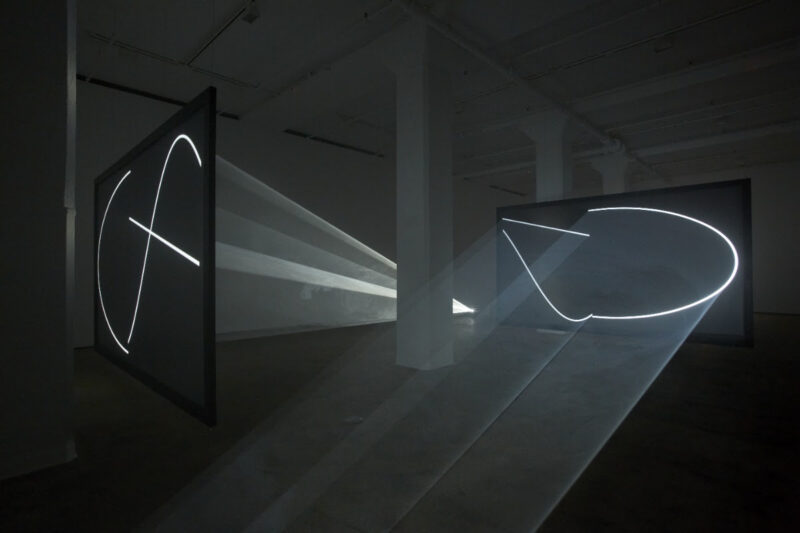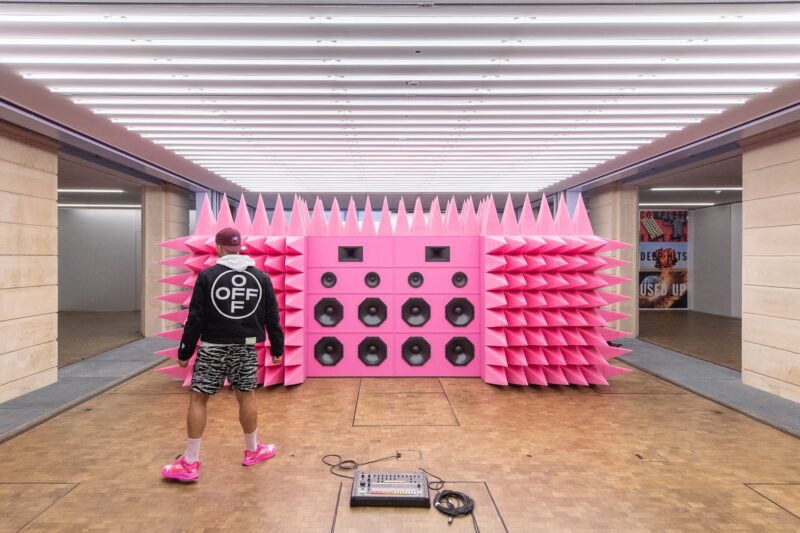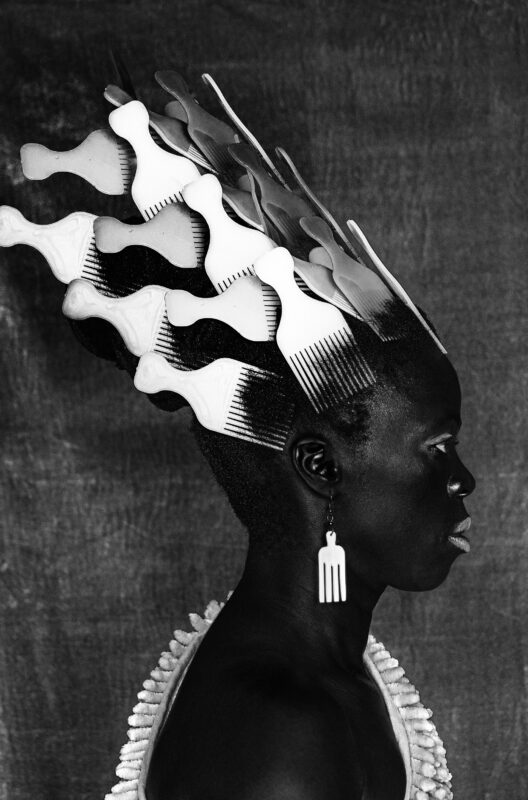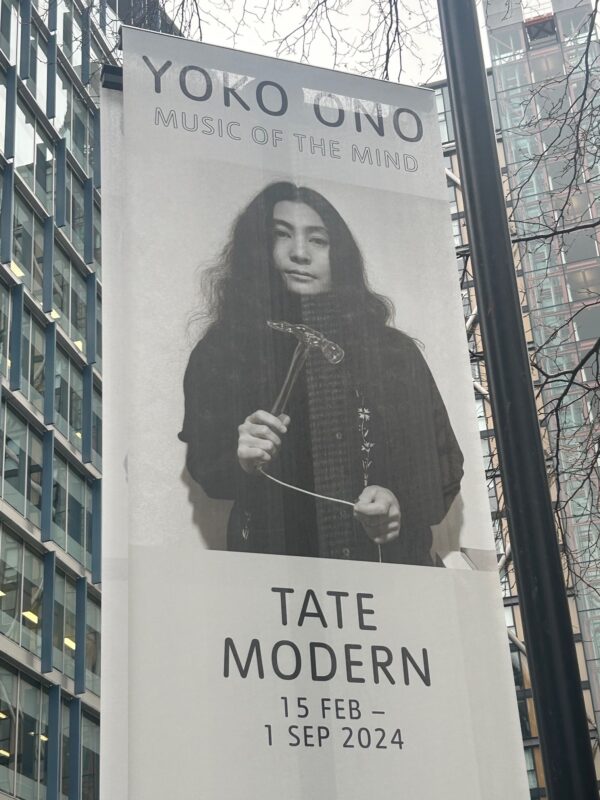Wes Anderson’s Megasaki
I spent this Bank Holiday in the company of Joan Jonas, Wes Anderson and Ericka Beckman. All three shows revolved around the notion of craft, of devoting time to create props and sets. The act of assembling physical elements adds a tactile layer to the video art which integrates the props and in doing so breaks the boundaries between us as viewers and the artist themselves as we are reminded that they have actively engaged with what appears on screen.
Although exploring the sets of Isle of Dogs at 180 The Strand (courtesy of Vinyl Factory as always) isn’t the typical event I write about, it surprisingly fit with my impromptu video art and crafts theme. The show was curated by Wes Anderson himself and was worth queuing outside in the cold for, especially because upon entering we immediately found ourselves in a pocket of Megasaki. I had not seen the film prior to the show (but felt compelled to that very evening) yet I was immediately immersed in Anderson’s latest world. The film’s noodle bar was made operational and greeted visitors with drinks inspired by each of the protagonists. Lanterns, baseball shirts, pleasant lighting and a fun atmosphere added to buzz. At the other end of the bar, next to the tables, another queue had started to form. Patiently waiting for our turn, we soon discovered that the first set was displayed there and it was a meta-experience, as it replicated the room we were presently in. Unsurprisingly, the rest of the show proved how meticulous Anderson is in bringing his realms to life through the use of music (The Vinyl Factory released a limited edition EP of the soundtrack in conjunction with the show) and by scrupulously populating each of the sets with beautiful details which were a wonder to behold. The lab was particularly noteworthy due to its nod to 2001: A Space Odyssey as was the plane, which was reminiscent of a Rauschenberg painting.

Set from Isle of Dogs
Again, the show offered a rare chance to engage with a film and appreciate the time and effort needed to generate such an uplifting epic on screen.
I then continued with Joan Jonas at Tate Modern.

The Juniper Tree – Joan Jonas
Sadly I was not able to see her Mirror Piece II and Delay Delay (London Version) performances during Ten Days Six Nights as I was in New York. The retrospective was a perfect way to absorb Jonas as her body of work emanates her personality so clearly. There are recurring themes in Jonas’s films and performances – she is a story teller at heart, fascinated by folklore, witchcraft, mirrors and masks. Of the latter she says “If you put on a mask you can enter another world. The perception of movement is transformed” and as she crafts ones inspired by the Japanese Noh theatre we follow her into a weird but wonderful realm. This transportive ability is perhaps most obvious through her construction of miniature portable video theatres. Jonas creates a box to contain her video but the box protrudes outwards, often including objects and portable speakers. Viewers therefore become ultra focused and immersed as we are effectively experiencing tunnel vision. Lines in the Sand occupies much of the show as it comprises a multitude of elements all exploring the myth of the Trojan War. We find yet another portable theatre, Pillow Talk, in which a couple is arguing over their possessions and in Jonas’s words this “echoes the trade war between Troy and Greece” whilst starting in an intimate environment. Jonas uses Hilda Doolittle’s poem ‘Helen in Egypt’ to toy with the idea that Helen originally set out to Egypt – albeit she then humorously places her in an Egyptian-style Las Vegas casino. The exhibition continues downstairs in the tanks where we find Wind and Reanimation. In Wind (an extremely fitting piece for the Tate given London’s wind tunnels) a series of women wearing outfits which resemble Bauhaus designs fight the elements and find themselves pushing against a strong, relentless wind. The black and white film is endearing and comical but not in a silly and futile fashion.

Reanimation – Joan Jonas
Reanimation on the other hand is a three screen installation with a beautiful prism whose rainbow reflections dance around the concrete walls and over one of the three screens where Jonas uses black ink and ice to create a liquid backdrop. Given how great the show was and how invested Jonas is in each and every one of her performances, I can’t wait to see her in Moving Off the Land Oceans – Sketches and Notes on 31 May (and I would encourage you to do the same).
From Southwark I set off to an institution I had been meaning to visit for ages but had never gotten round to, the Zabludowicz Collection. They recently opened a dedicated VR art room which was annoyingly full the day of my visit, so I will be returning before NAUSEA ends and will report back. The show I was primarily there to see was Ericka Beckman’s.
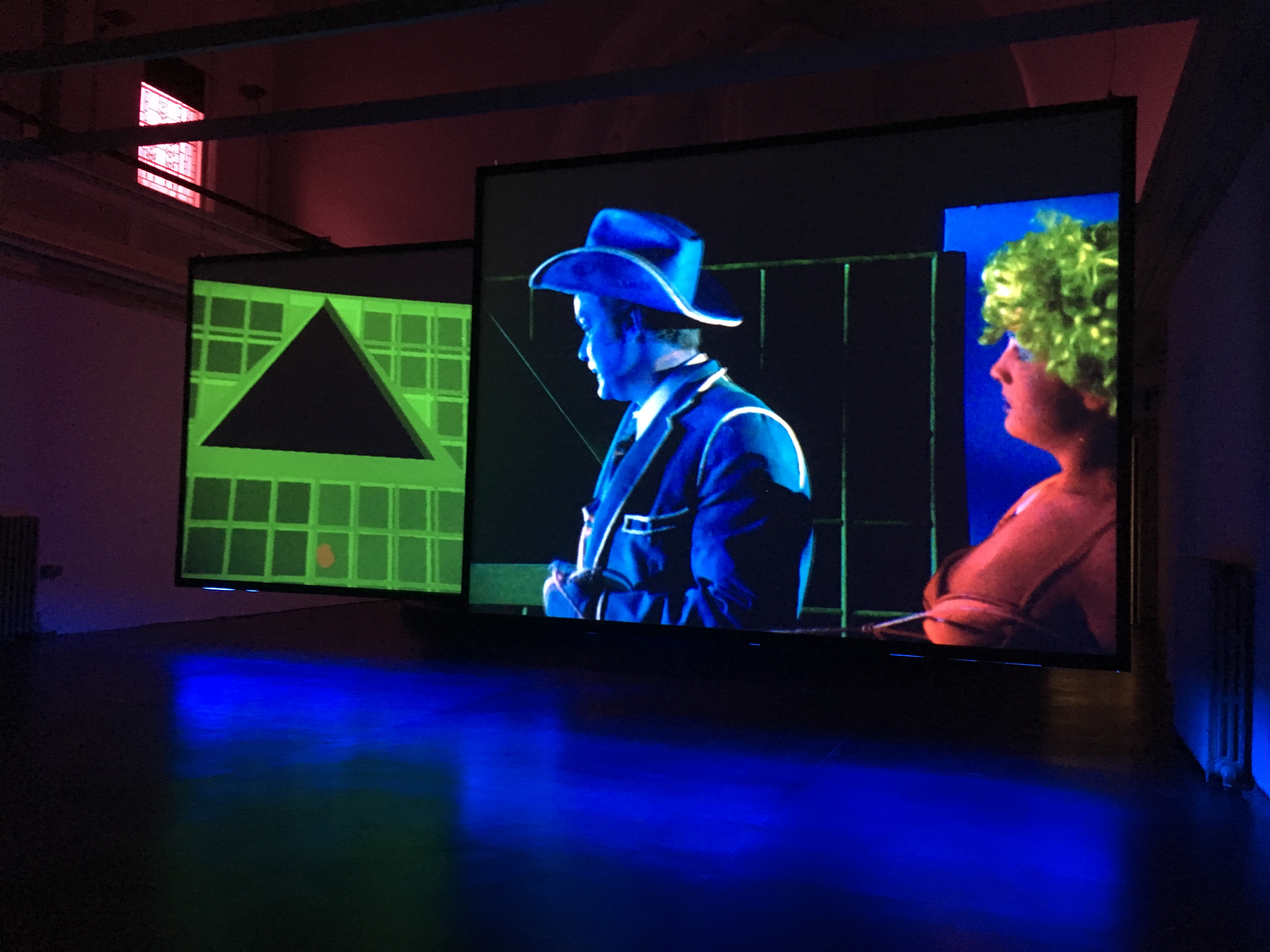
Hiatus (1999/2015) – Ericka Beckman
Much like Jonas, Beckman uses film as a medium for her performances which often incorporate hand made objects and revolve heavily around story-telling. This is unsurprising as Beckman lived through New York’s late 70s and early 80s and had in fact shown her early work to Jonas herself, amongst others. Shot on 16mm and then transferred to HD video, films such as Hiatus and Cinderella play with our notion of fairytales and present the characters in a lo-fi world which closely imitates video games and anticipates the advent of Virtual Reality. For Hiatus Beckman spent time learning about the development of what would become the field of VR at NASA’s research centre in the late 1980s. Sensing this to be a male-dominated world, Beckman decided to create a female protagonist, Madi, whom we see both in the virtual reality game as her character Wanda and also in her own bedroom. As Wanda creates a peaceful environment her antagonist Wang appears and subverts her world, turning it into a rigid corporate space. Wanda’s aim is to find a way to break free of Wang’s rules and emancipate herself. In a similar vein Cinderella shows the protagonist attempting to learn the game she finds herself in where her goal is to win Prince Charming.

Cinderella (1986) – Ericka Beckman
Here Beckman uses stop animation as well as physical sets – one of which is reconstructed behind us viewers, again breaking the boundaries between the on-screen and real world. Cinderella ultimately decides to change the game itself and rather than finding herself in the production line of dolls being repeatedly churned out by factory employees, she chooses to unchain herself and produce a record which enables her to escape. Music is a key component in this work as Beckman deploys Brooke Halpin to create its unique soundtrack.
For those who’d like to learn more about pioneers Beckman and Jonas, as well as delight in Wes Anderson’s sets details are all below.
Wes Anderson’s Isle of Dogs sets are at 180 The Strand until 5 April.
Joan Jonas’s retrospective is on at Tate Modern until 5 August.
Ericka Beckman is on at the Zabludowicz Collection until 8 July 2018.


